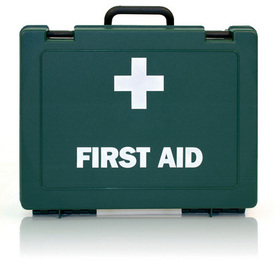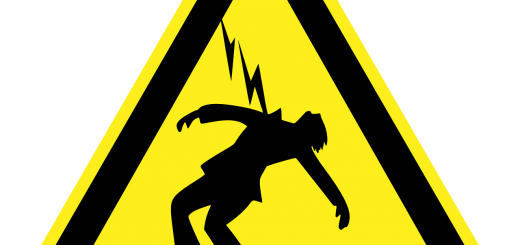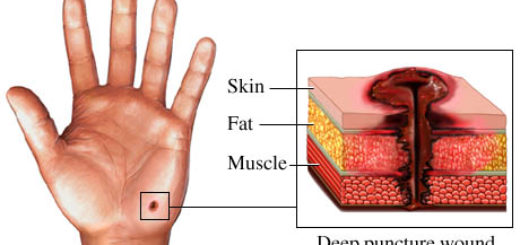First aid practice test questions

The answers to these questions are at the end of the post.
Remember your local first aid practices/policies may be slightly different
First aid practice questions
1. What is the primary symptom of fractured ribs?
A) pain
B) nausea
C) paralysis
D) shock
2. What is the most important step in caring for a victim of an impaled object in the chest?
A) removing the object
B) controlling internal bleeding
C) stabilizing the object in place
D) controlling external bleeding
3. If an impaled object is penetrating the chest, the first aider should:
A) remove the object as soon as possible
B) keep the victim on their back
C) keep the victim on their back with the feet elevated
D) stabilize the object
4. How do you care for a sucking chest wound?
A) seal the wound
B) stop any external bleeding
C) stop internal bleeding
D) leave the wound uncovered
5. What can be used to stabilize fractured ribs?
A) a soft object, such as a pillow
B) an elastic bandage
C) adhesive tape
D) all of the above
6. Signs and symptoms of flail chest include:
A) blood oozing from the injury site
B) pain upon inhalation
C) an object penetrating the chest
D) abnormal movement of part of the chest wall during breathing
7. If the chest wall moves in a direction opposite to that of the rest of the chest wall during breathing, the victim is experiencing ____.
A) paradoxical breathing
B) hemothorax
C) pneumothorax
D) tension pneumothorax
8. If an object has penetrated the abdominal wall, you should:
A) not remove the object
B) stabilize the object in place
C) control bleeding by placing bulky dressings around the object
D) all of the above
9. For an abdominal wound in which organs protrude, you should:
A) reinsert the organs
B) cover the organs with a moist, sterile dressing
C) cover the organs with a dry, sterile dressing
D) cover the organs snugly with an elastic roller bandage
10. What symptoms commonly accompany a pelvis injury?
A) severe pain
B) shock
C) massive internal bleeding
D) all of the above
11. How should a first aider treat a victim with a pelvis injury?
A) treat for shock
B) pad between the thighs, then tie the knees and ankles together
C) keep the victim on a firm surface
D) all of the above
12. The two classifications for fractures are:
A) open or closed
B) complete or incomplete
C) compound or complex
D) open or compound
13. With an open fracture, the skin is:
A) intact
B) broken or damaged
C) bruised
D) none of the above
14. An open fracture is also known as a(n):
A) splint fracture
B) open fracture
C) closed fracture
D) complex fracture
15. If the fracture results in the bone protruding through the skin, it would be considered a(n):
A) splint fracture
B) open fracture
C) closed fracture
D) complex
16. A fracture which cuts across the bone at right angles to its long axis is called:
A) transverse
B) greenstick
C) spiral
D) oblique
17. A fracture in which the bone is fragmented into more than two pieces is called:
A) impacted
B) greenstick
C) spiral
D) comminuted
18. What mnemonic can be used to identify signs and symptoms of a fracture?
A) STOD
B) TOPS
C) DOTS
D) POTS
19. Which of the following are signs and symptoms of fracture?
A) deformity
B) swelling
C) crepitus
D) all of the above
20. Most fractures:
A) present an immediate threat to life
B) involve multiple breaks in the bone
C) seldom present an immediate threat to life
D) seldom require medical attention
21. First aid for fractures includes:
A) checking breathing
B) treating for shock
C) looking at and feeling the injured site
D) all of the above
22. The “C” in CSM stands for:
A) check
B) circulation
C) compression
D) cause of injury
23. What injury results when a joint comes apart and stays apart?
A) compound fracture
B) dislocation
C) sprain
D) strain
24. First aid for dislocations includes which of the following?
A) checking CSM
B) splinting the joint
C) using RICE procedures
D) all of the above
25. Which joints are most often sprained?
A) shoulders and ankles
B) shoulders and knees
C) knees and ankles
D) knees and fingers
26. A ____ results when the muscle is stretched beyond its normal range of motion.
A) sprain
B) strain
C) cramp
D) contusion
27. A cavity, indentation, or bump that can be felt or seen are signs of:
A) muscle strain
B) muscle contusion
C) muscle cramps
28. The recommended treatment for muscle strains is:
A) moist heat packs
B) dry heat packs
C) RICE
D) gentle stretching and massage
29. Muscle contusions result from:
A) a blow to the muscle
B) overuse of one specific muscle group
C) stretching the muscle beyond its normal range
D) cutting the muscle with a sharp object
30. Which of the following should be used to treat muscle cramps?
A) gently stretch the muscle
B) massage the muscle
C) Drink lightly salted water
D) all of the above
First aid practice test answers
- a
- c
- d
- a
- a
- d
- a
- d
- b
- d
- d
- a
- b
- b
- b
- a
- d
- c
- d
- c
- d
- b
- b
- d
- a
- b
- a
- c
- a
- d






All i want to say is “thank you so much”.
Thank you too!
Wow, this is great! thank you..
This is greatful thnk you